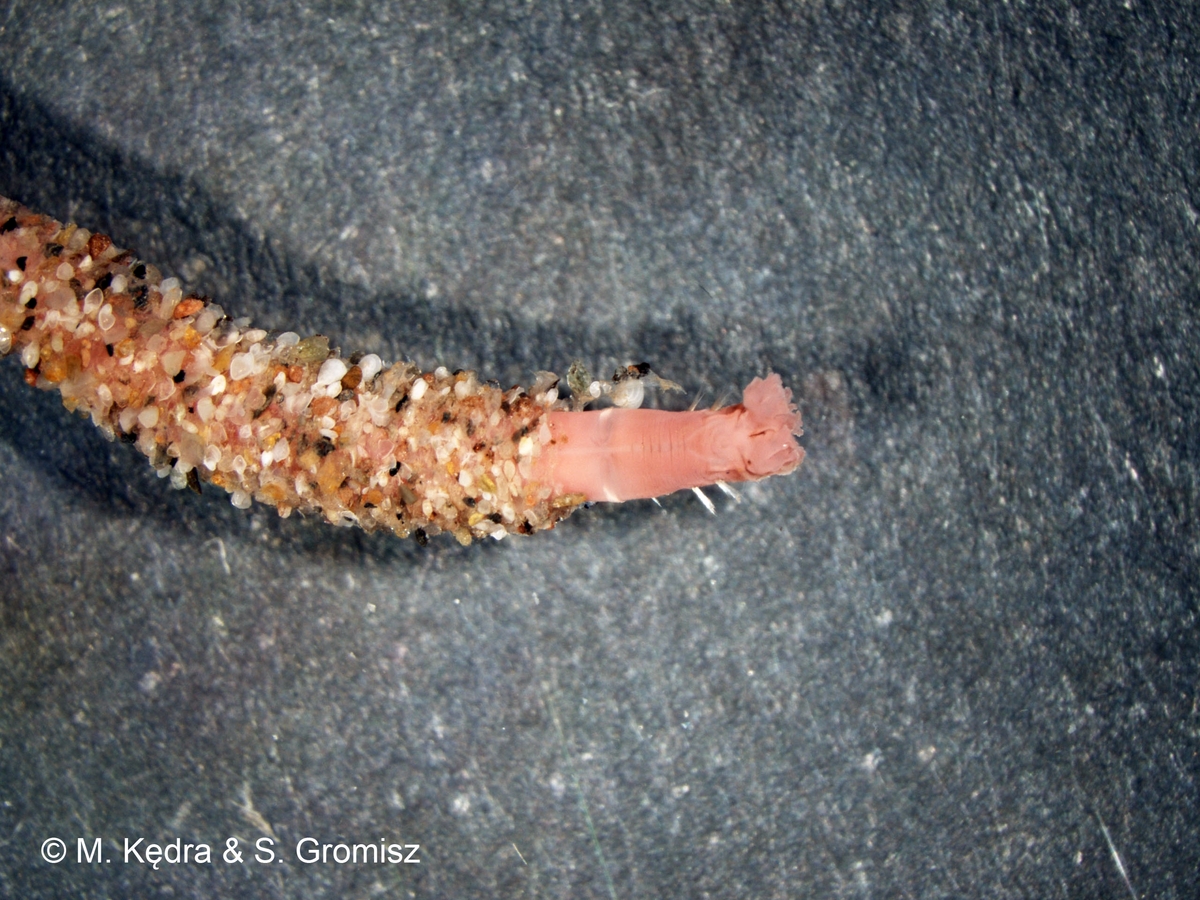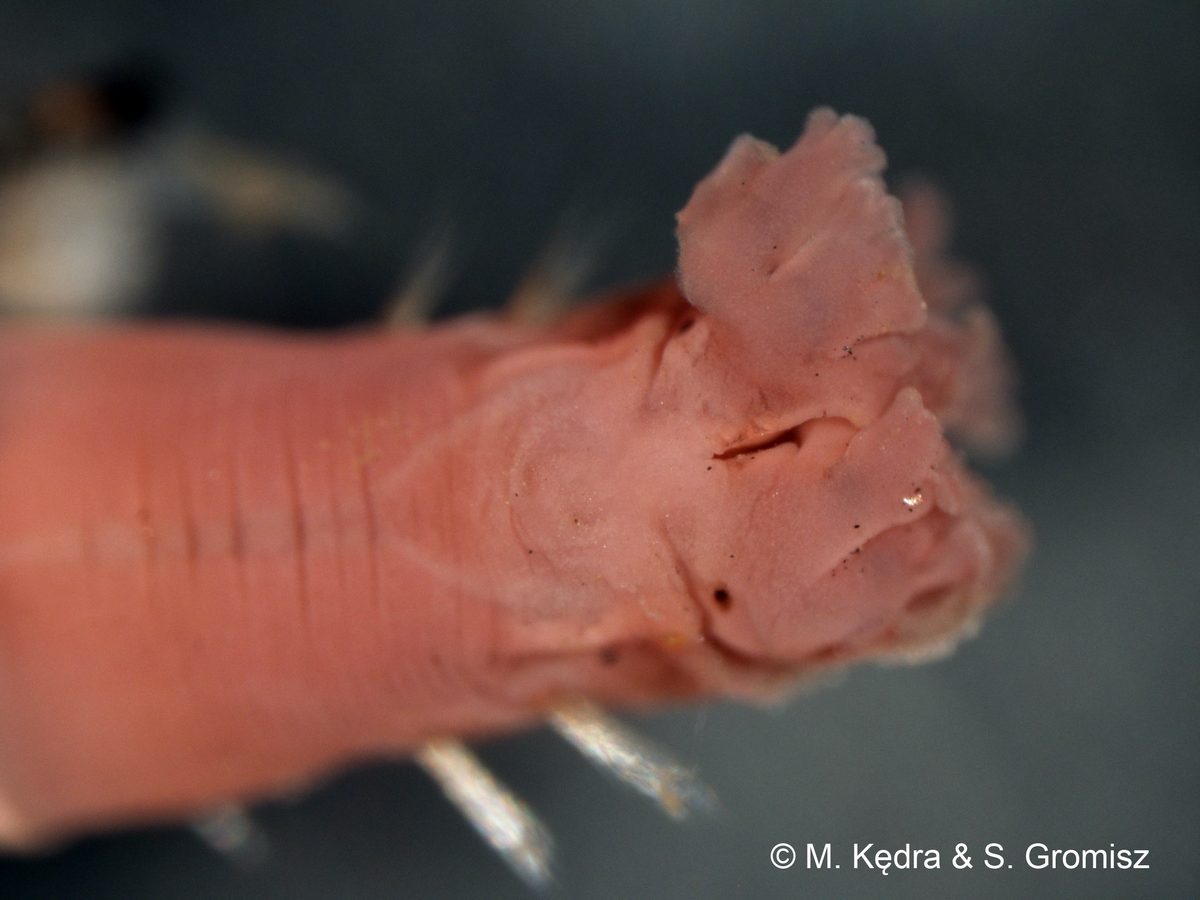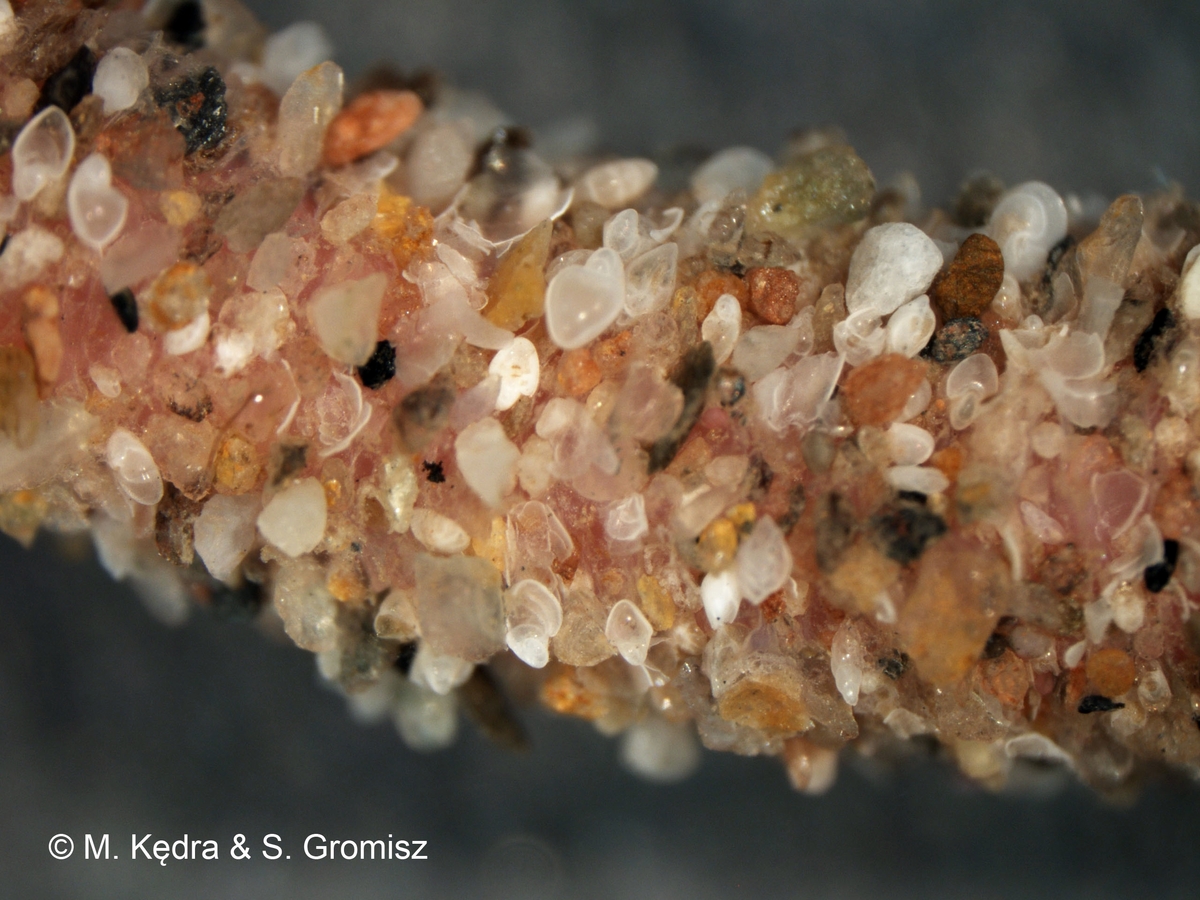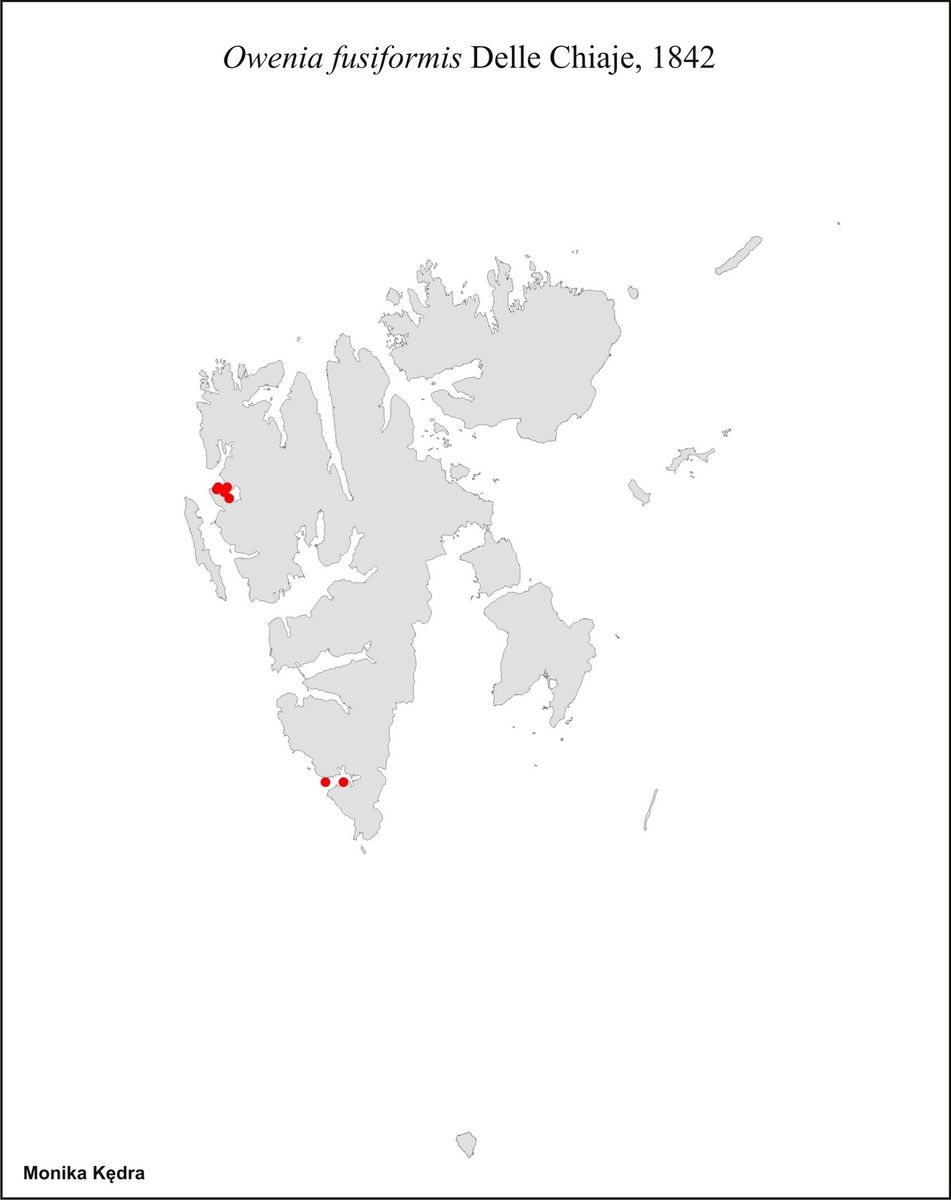Owenia fusiformis delle Chiaje, 1841

|

|

|

|
Ammochares ottonis Grube, 1846
Ammochares assimilis Sars, 1851
Owenia assimilis Sars, 1851
Ops digitata Carrington, 1865
Owenia filiformis Claparède, 1868
Owenia filiformis Michaelsen, 1896
Distinguishing characteristics
Head region with a crown of tentacles.
Characteristic tube encrusted with flat shell fragments and other foreign objects overlapping like roof tiles.
Species description
Body short, anteriorly cylindrical, posterirly tapering and dorsoventrally flattened. Head region with a crown of tentacles. On each side of tentacular crown 3 or 4 flattened trunks, each with four dichotomously branched tentacles. At the base of crown a pair of eye-spots. 3 short thoracic segments, 15-20 abdominal segments. Notochaetae capillary and spinous. Abdominal neuropodia are wide, flattened tori with many small uncini with 2 teeth by side nearly at the same level. Pygidium with a pair of weakly developed lobes. Tube - short, tapering at the both ends, with a thick more or less translucent secreted layer characteristically encrusted with flat shell fragments and other foreign objects overlapping like roof tiles.
Size
50 mm with 30 segments.
Color
Alive greenish, often brown pigments on anterior part and lighter transverse glandular bands, branchiae red.
Habitat
In various bottoms, slightly under the surface. At low water and in the shallow sublittoral. 10-30 m.
Mobility
Discretely motile.
Can move around dragging the tube with it.
Feeding
Surface deposit feeder.
Suspension feeder.
Life cycle
Main spawning period is short, from June to July. The larvae remain in the plankton for at least four weeks. This species seems able to adapt its reproductive strategy to different environmental conditions. In more temperate waters O. fusiformis produces a distinctive type of planktotrophic larva and breeding occurs in autumn.
Distribution
Cosmopolitan. North Sea to Öresund, Mediterranean, Indian Ocean, Pacific.

